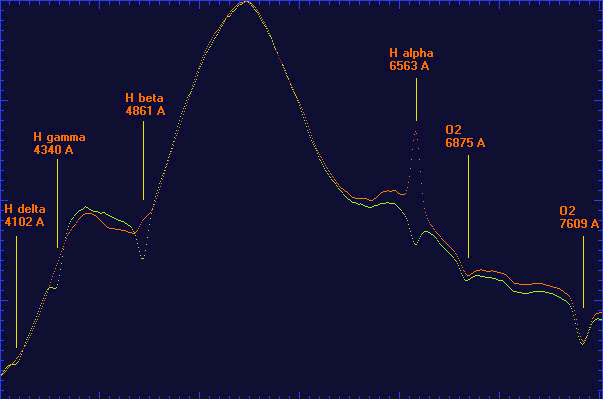
Spectral profiles captured with the 100 grooves/mm
Jeulin grating near the focal plane of a 190mm telescope. The camera
is an Audine with a KAF-0400 CCD. The spectrum in green is that
of Delta Cassiopeae, of type A5. The hydrogen Balmer lines are readily
visible. The spectrum in red is Gamma Cassiope, whose type is B0e.
The H-alpha hydrogen emission line is spectacular. Exposure times
of 30 seconds.

Our homemade spectrograph can give access to
galaxy spectra. On this image obtained on a 190 mm Lichtenknecker
flat-field telescope by compositing 19 exposures of 2 minutes each
one can see elliptic galaxies NGC 2258 (right) and NGC 2256 (left,
the galaxies images are included in a blue rectangle). Corresponding
spectra are surrounded by an orange rectangle. They are pretty much
similar to that of most stars. The Jeulin grating with 100 grooves/mm
is located 19.5 mm from the KAF-0400 surface and dispersion is 45A/pixel.
North is to the right.
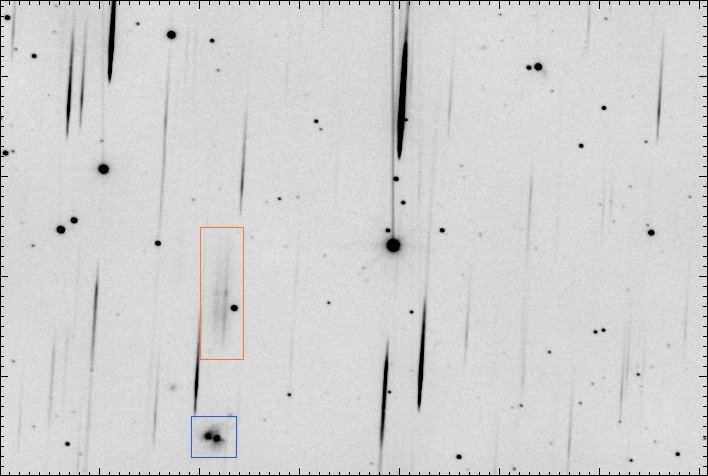
Figure 22. Spectrum of the dual system NGC
3690 (ARP 299) obtained with the same instrument configuration as
above. Thirty seven images of 120 seconds exposure have been composited,
which is equivalent to an integrated exposure of 1 hour and 10 minutes.
The spectrum for those active galactic centers clearly shows an
emission line (note that at the time the image was obtained, on
1999/01/28, a supernova of magnitude 16.5 was located to the right
of NGC 3690's center, but being too weak it was not within reach
of this spectrograph). The wavelength measured for the emission
line is 0.6740 micron. It is most probably the Haline normaly seen
at 0.6563 micron, however it has been displaced towards the red
because of the galaxy's recession velocity, that has be measured
to be 8000 km/s.
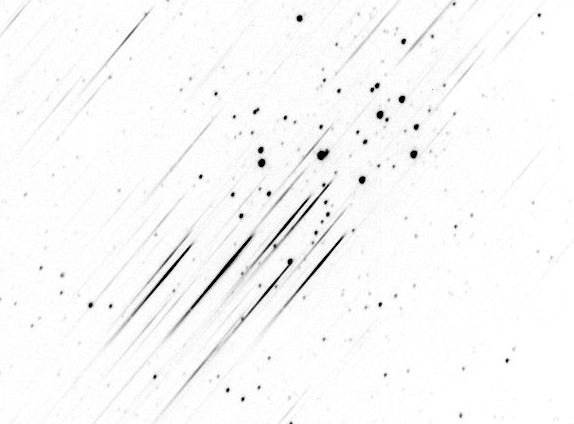
In
order to obtain this image showing spectra for the main Pleiades
stars, the 100 grooves/mm Jeulin grating has been located between
a simple photographic lens of 80 mm focal length at F/5.6 and an
Audine camera. Atmospheric atomic oxygen's line at 0.76 microns
is readily visible in the spectra for most stars. The emission H-alpha
line is visible for some stars (there are Be type stars).
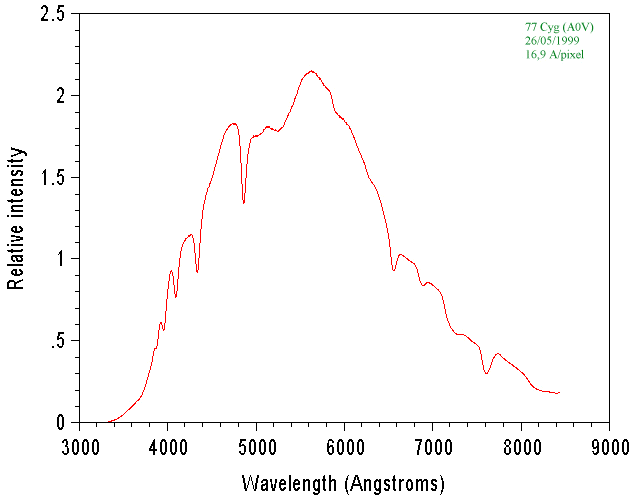
Spectrum for 77 Cygni,
of type A0V, captured with a 190 mm telescope and an Audine camera
(CCD KAF-0401E). The Balmer lines are clearly visible in the blue
part of the spectrum. Resolution has been significantly increased
by use of a GRISM-type system built around a Rainbow Optics grating and a prism with a 3°57'
angle.
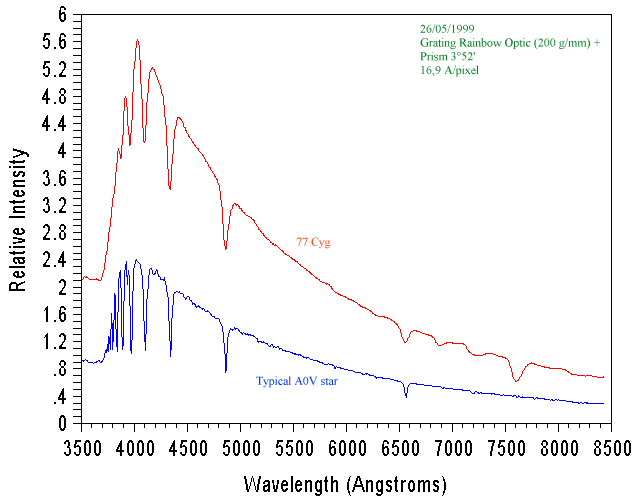
Comparison of a
spectrum for 77 Cygni (after photometric scaling) with an A0V star's
reference spectrum.